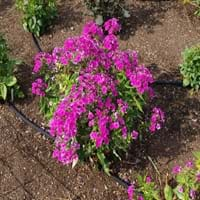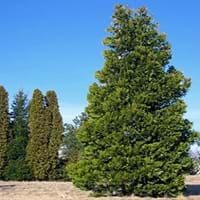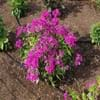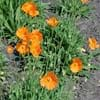Life Span
Perennial
Annual and Perennial
Origin
Northeastern United States, Mid-Atlantic United States, Southeastern United States, North-Central United States, Central United States, South-Central United States, Canada
Western United States, California, Mexico
Types
Blue Ice, Eventide, Starfire
Not Available
Number of Varieties
Not Available
Habitat
Dappled Shade, Shady Edge, Woodland Garden
low mountains, Mountain tops, Subtropical climates, Temperate Regions
USDA Hardiness Zone
4-8
5-8
Sunset Zone
1a, 1b, 2a, 2b, 3a, 3b, 4, 5, 6, 7, 8, 9, 10, 11, 12, 13, 14, 18, 19, 20, 21
1a, 1b, 2a, 2b, 3a, 3b, 4, 5, 6, 7, 8, 9, 10, 11, 12, 14, 15, 16, 17, 18, 19, 20, 21, 22, 23, 24
Habit
Upright/Erect
Upright/Erect
Minimum Height
Not Available
Minimum Width
Not Available
Flower Color
Purple, Magenta
Non Flowering Plant
Flower Color Modifier
Bicolor
Bicolor
Fruit Color
Not Available
Sandy Brown
Leaf Color in Spring
Chartreuse, Gold
Green
Leaf Color in Summer
Chartreuse, Gold
Green
Leaf Color in Fall
Chartreuse, Yellow green, Tan
Green
Leaf Color in Winter
Not Available
Green
Plant Season
Summer, Fall
Spring, Summer, Fall, Winter
Sunlight
Full Sun, Partial Sun
Full Sun, Partial Sun
Type of Soil
Clay, Loam, Sand
Loam, Sand
The pH of Soil
Acidic, Neutral, Alkaline
Acidic, Neutral
Soil Drainage
Well drained
Well drained
Bloom Time
Summer, Late Summer, Early Fall, Fall
Not Available
Tolerances
Not Available
Drought
Where to Plant?
Ground
Ground
How to Plant?
Seedlings
Stem Planting
Plant Maintenance
Medium
Medium
Watering Requirements
Average Water Needs, Doesn't tolerate standing water
Needs less watering, Water occasionally
In Summer
Lots of watering
Lots of watering
In Spring
Moderate
Moderate
In Winter
Average Water
Average Water
Soil pH
Acidic, Neutral, Alkaline
Acidic, Neutral
Soil Type
Clay, Loam, Sand
Loam, Sand
Soil Drainage Capacity
Well drained
Well drained
Sun Exposure
Full Sun, Partial Sun
Full Sun, Partial Sun
Pruning
Remove damaged leaves, Remove dead branches, Remove dead leaves
Prune if you want to improve plant shape, Remove damaged leaves, Remove dead branches, Remove dead leaves
Fertilizers
General purpose slow-acting granular fertilizer
No fertilizers needed
Pests and Diseases
Powdery mildew, Rust, Septoria leaf spot, Stem canker
Insects
Plant Tolerance
Drought
Drought
Flower Petal Number
Single
Not Available
Fragrant Bark/Stem
No
Yes
Foliage Texture
Medium
Medium
Foliage Sheen
Matte
Matte
Attracts
Butterflies
Birds
Allergy
Pollen
no allergic reactions
Aesthetic Uses
Borders, Ground Cover
Showy Purposes
Beauty Benefits
Not Available
Not Available
Environmental Uses
Air purification
Air purification
Medicinal Uses
No Medicinal Use
Stomach pain
Part of Plant Used
Not Available
Bark, Leaves
Other Uses
Used as Ornamental plant
Making Perfumes, Used in pencil industry
Used As Indoor Plant
No
No
Used As Outdoor Plant
Yes
Yes
Garden Design
Cutflower, Feature Plant, Mixed Border, Wildflower
Screening / Wind Break, Shade Trees, Street Trees
Botanical Name
PHLOX paniculata 'Goldmine'
CALOCEDRUS decurrens
Common Name
Garden Phlox, Goldmine Phlox
Incense Cedar
In Hindi
Goldmine Phlox
Incense Cedar
In German
Goldgrube Phlox
Zeder
In French
Phlox Goldmine
Encens Cedar
In Spanish
Phlox Goldmine
cedro de incienso
In Greek
Goldmine Phlox
θυμίαμα Κέδρος
In Portuguese
Phlox Goldmine
cedro de incenso
In Polish
Goldmine Phlox
kadzidło Cedar
In Latin
.org Phlox
incensum Cedar
Phylum
Magnoliophyta
Tracheophyta
Class
Magnoliopsida
Pinopsida
Family
Polemoniaceae
Cupressaceae
Clade
Angiosperms, Asterids, Eudicots
Not Available
Tribe
Phlocideae
Not Available
Subfamily
Polemonioideae
Not Available
Number of Species
Not Available
Not Available
Season and Care of Goldmine Phlox and Incense Cedar
Season and care of Goldmine Phlox and Incense Cedar is important to know. While considering everything about Goldmine Phlox and Incense Cedar Care, growing season is an essential factor. Goldmine Phlox season is Summer and Fall and Incense Cedar season is Summer and Fall. The type of soil for Goldmine Phlox is Clay, Loam, Sand and for Incense Cedar is Loam, Sand while the PH of soil for Goldmine Phlox is Acidic, Neutral, Alkaline and for Incense Cedar is Acidic, Neutral.
Goldmine Phlox and Incense Cedar Physical Information
Goldmine Phlox and Incense Cedar physical information is very important for comparison. Goldmine Phlox height is Not Available and width Not Available whereas Incense Cedar height is 2,130.00 cm and width 180.00 cm. The color specification of Goldmine Phlox and Incense Cedar are as follows:
Goldmine Phlox flower color: Purple and Magenta
Goldmine Phlox leaf color: Chartreuse and Gold
Incense Cedar flower color: Non Flowering Plant
- Incense Cedar leaf color: Green
Care of Goldmine Phlox and Incense Cedar
Care of Goldmine Phlox and Incense Cedar include pruning, fertilizers, watering etc. Goldmine Phlox pruning is done Remove damaged leaves, Remove dead branches and Remove dead leaves and Incense Cedar pruning is done Prune if you want to improve plant shape, Remove damaged leaves, Remove dead branches and Remove dead leaves. In summer Goldmine Phlox needs Lots of watering and in winter, it needs Average Water. Whereas, in summer Incense Cedar needs Lots of watering and in winter, it needs Average Water.





